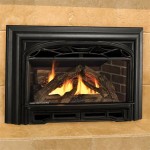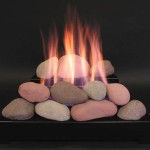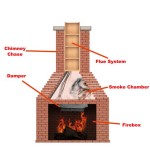Can I Replace a Gas Fireplace With a Wood Stove? A Comprehensive Guide
Replacing a gas fireplace with a wood stove is a significant home improvement project that requires careful consideration. While both appliances provide supplemental heating and ambiance, they operate differently and have varying installation requirements, safety considerations, and aesthetic impacts. This article will delve into the key aspects of this type of conversion, providing a comprehensive overview to help homeowners make informed decisions.
The motivations behind considering this switch are varied. Some homeowners seek a more rustic aesthetic, preferring the crackling fire and visual appeal of burning wood. Others are drawn to the potential cost savings associated with using wood as a fuel source, especially if they have access to affordable or free wood. Still others may be seeking a more sustainable heating option, believing that wood, when sourced responsibly, is a carbon-neutral or low-carbon fuel source. Regardless of the reason, it is essential to thoroughly evaluate the feasibility, costs, and implications before embarking on this home improvement project.
Key Point 1: Assessing Existing Infrastructure and Code Compliance
The existing infrastructure of a gas fireplace installation presents both opportunities and challenges when converting to a wood stove. One crucial aspect is the chimney. Gas fireplaces often vent through relatively small, lightweight metal flues. Wood stoves, on the other hand, require a robust chimney specifically designed and rated for the high temperatures and potentially corrosive byproducts of wood combustion. Using an existing gas fireplace flue for a wood stove is generally not permitted and poses a significant fire hazard.
Therefore, a critical step is to have the existing chimney inspected by a qualified chimney sweep or professional installer. They can assess its condition, determine if it is suitable for wood stove use (which is unlikely), and advise on the necessary modifications or replacement. Typically, a new, properly sized and insulated stainless steel chimney liner must be installed within the existing chimney structure. This liner must meet stringent safety standards and be compatible with the specific wood stove being installed.
Building codes and regulations play a significant role in this type of conversion. Local codes often dictate specific requirements for wood stove installations, including chimney height, clearances to combustible materials (walls, floors, ceilings), hearth pad size and composition, and carbon monoxide detector placement. Obtaining the necessary permits from the local building department is essential. This ensures that the installation meets all applicable safety standards and avoids potential fines or complications during a future home sale.
The presence of a gas line will also need to be addressed, usually by capping it off securely and safely. This task should be performed by a licensed gas fitter to guarantee safety and compliance with regulations. Ignoring this step can lead to dangerous gas leaks.
Key Point 2: Choosing the Right Wood Stove and Installation
Selecting the appropriate wood stove is a crucial decision. Factors to consider include the size of the area to be heated, the climate, and the homeowner's heating needs. Wood stoves are rated by their heating capacity, measured in BTUs (British Thermal Units). Choosing a stove that is too large can lead to overheating and inefficient burning, while a stove that is too small may not adequately heat the space.
Modern wood stoves are designed with advanced combustion technologies that improve efficiency and reduce emissions. EPA-certified stoves meet strict emissions standards and are generally more efficient than older, non-certified models. When selecting a stove, consider its efficiency rating and emissions output. Some jurisdictions offer rebates or tax credits for the purchase of EPA-certified stoves.
Installation is a critical aspect of safety and performance. It's highly recommended that a professional, certified wood stove installer handle the installation process. They possess the knowledge and experience to ensure that the stove is properly connected to the chimney, that clearances to combustible materials are met, and that the overall installation complies with all applicable codes and regulations. A professional installation minimizes the risk of fire hazards and ensures that the stove operates safely and efficiently.
The hearth pad is another essential component. This is a non-combustible surface that protects the floor from the heat and embers that can escape from the stove. The size and material of the hearth pad are typically specified in the wood stove manufacturer's instructions and by local building codes. The hearth pad must extend a certain distance in front of the stove and to the sides to provide adequate protection.
Key Point 3: Safety Considerations and Operational Requirements
Operating a wood stove safely requires adherence to specific guidelines. Regular maintenance is crucial, including cleaning the chimney at least once a year, or more frequently if heavy use occurs. Creosote, a flammable byproduct of wood combustion, can accumulate in the chimney and pose a significant fire hazard. A chimney sweep can professionally clean the chimney and inspect it for any damage or deterioration.
Using properly seasoned wood is essential for efficient and safe operation. Seasoned wood has a lower moisture content, which allows it to burn hotter and cleaner, reducing creosote buildup. Freshly cut wood should be allowed to dry for at least six months, and preferably a year or more, before being burned.
Carbon monoxide (CO) detectors are mandatory in homes with wood stoves. CO is a colorless, odorless, and poisonous gas that can be produced by incomplete combustion. Detectors should be installed in accordance with the manufacturer's instructions and tested regularly to ensure they are functioning properly.
Safe ash disposal is another important consideration. Ashes should be allowed to cool completely before being removed from the stove. They should then be placed in a metal container with a tight-fitting lid and stored away from combustible materials. Improper ash disposal can lead to fires.
Homeowners should also be aware of the environmental impact of wood burning. While wood can be a renewable fuel source, it also produces particulate matter and other pollutants that can affect air quality. Using an EPA-certified stove and burning seasoned wood can help minimize these emissions. Some areas have restrictions or regulations on wood burning, particularly during periods of poor air quality.
Insurance companies also need to be notified about the installation of a wood stove. Failure to do so could potentially void the homeowner's insurance policy in the event of a fire or other incident related to the stove.
Beyond the technical aspects, homeowners should consider the lifestyle changes associated with owning a wood stove. Wood stoves require manual operation, including loading wood, controlling the air supply, and removing ashes. This can be more labor-intensive than operating a gas fireplace. The availability of wood, its cost, and the homeowner's physical ability to handle and store wood are all factors to consider.
In summary, replacing a gas fireplace with a wood stove is a complex undertaking that requires careful planning, professional installation, and ongoing maintenance. By understanding the key considerations outlined in this article, homeowners can make an informed decision about whether this conversion is right for their home and lifestyle. It's crucial to prioritize safety, code compliance, and environmental responsibility throughout the entire process.

Replacing A Gas Fire With Wood Burner

Do You Want To Replace Your Gas Fire With A Woodburner

Converting A Fireplace To Wood Burning Stove Chesneys

Replacing A Gas Fireplace With Real Wood Buringing One Hometalk

Want To Convert Gas Wood Fireplace Full Service Chimney

What Does It Cost To Install A Fireplace Vs Wood Stove Stamford Fireplaces

Converting A Fireplace To Wood Burning Stove Chesneys

Is It Time To Replace Your Old Gas Fire For A More Efficient Wood Burning Stove Alfred Poppins

Want To Convert Gas Wood Fireplace Full Service Chimney

Convert From Wood To Gas With A Insert The Kernel Burner








